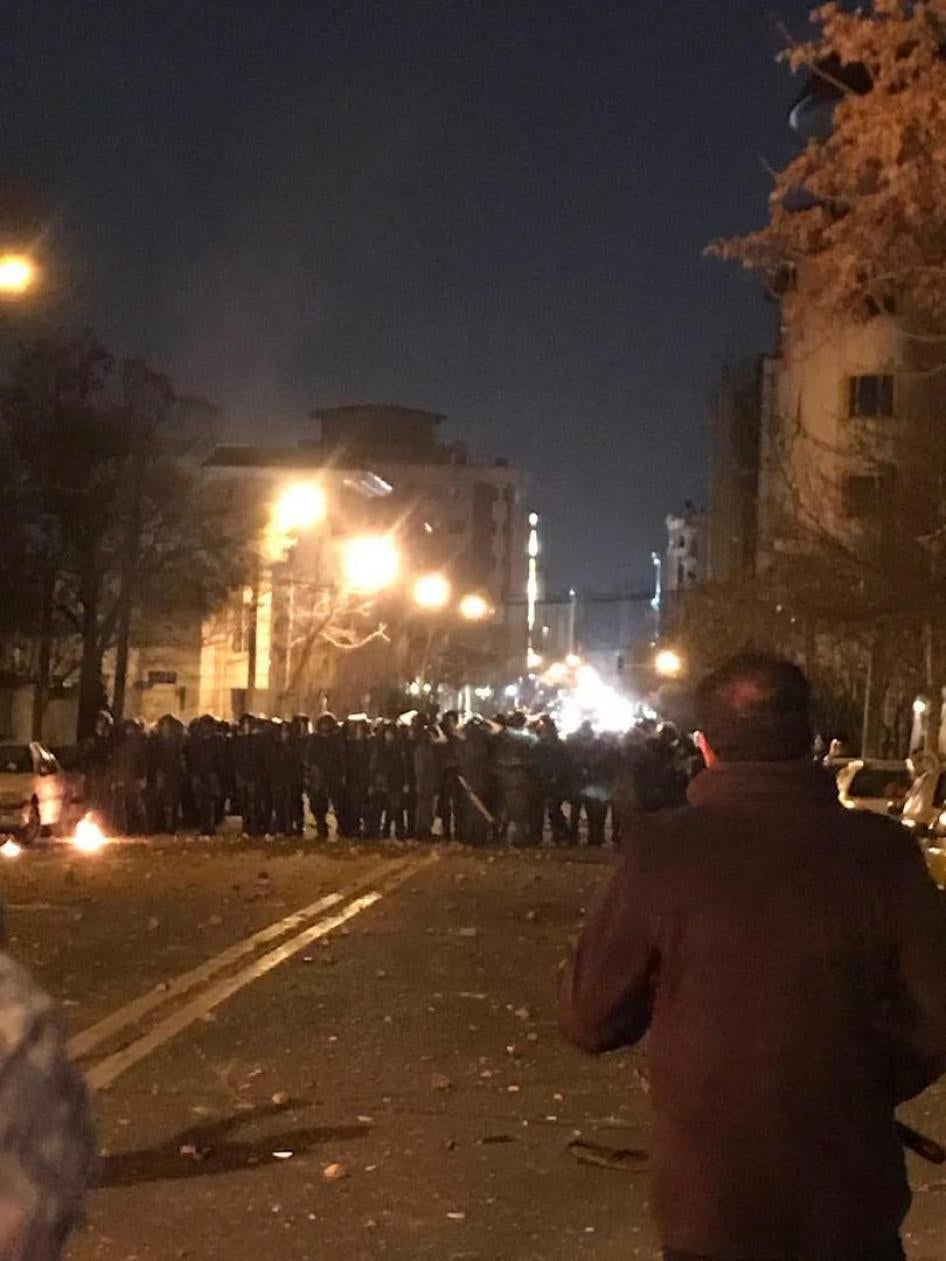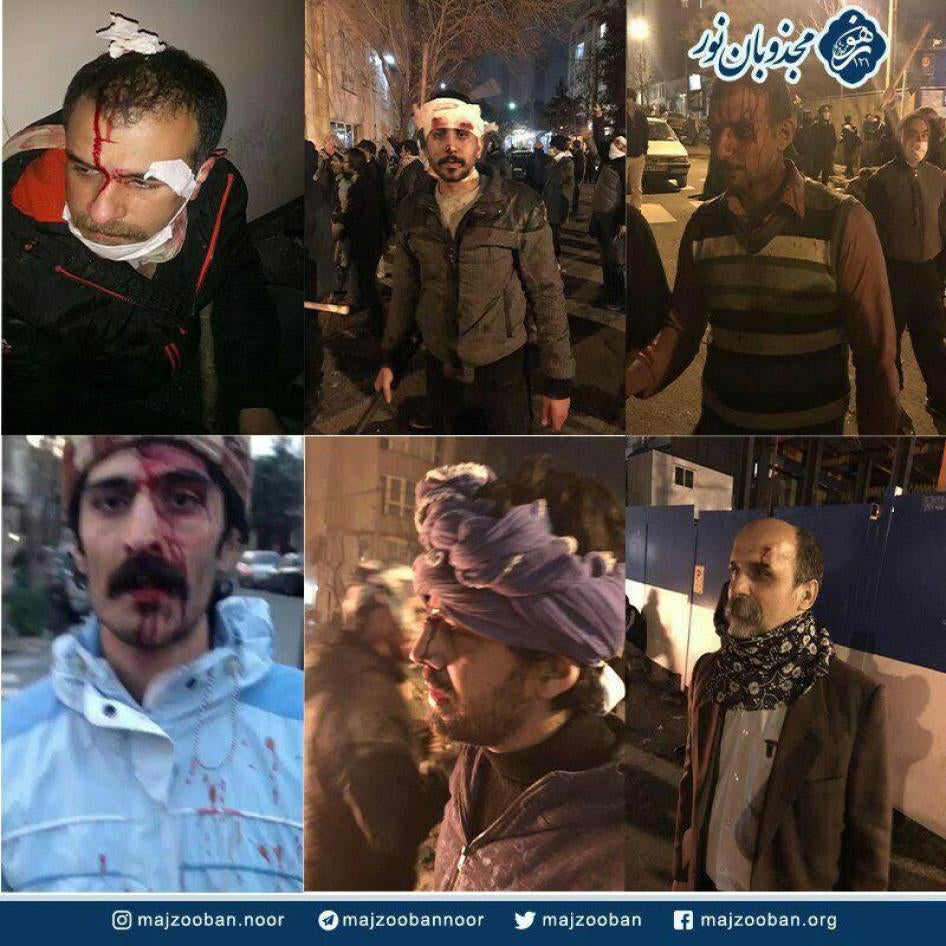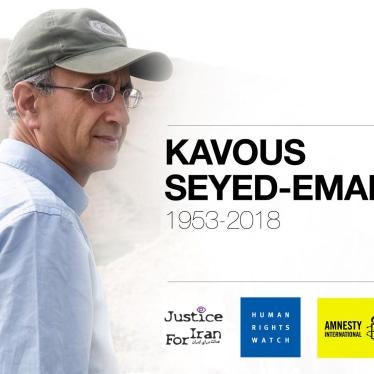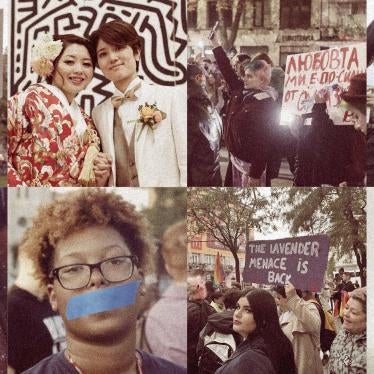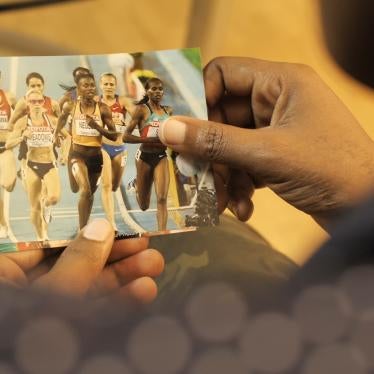(Beirut) – Iranian authorities arrested over 300 members of the minority Dervish Muslim community in late February 2018 after police forcibly tried to break up a protest. The events in February stemmed from what appears to be an intensified crackdown on the Dervish minority, including likely ramped-up surveillance of the group’s leader.
The ensuing clashes left dozens of people injured and at least three police officers and one Basij member dead. One arrested protester died in custody in unexplained circumstances. The Iranian authorities should immediately release those held or charge them with a recognizable crime. The authorities should also allow for an independent investigation into possible use of excessive force during the clashes.
“Iranian judicial and security authorities are on a tear, violently repressing protests by groups ranging from people concerned about economic conditions to women tired of compulsory dress laws and now a religious minority group,” said Sarah Leah Whitson, Middle East director at Human Rights Watch. “Crushing dissent instead of encouraging dialogue is a hallmark of oppression.”
Police disrupted a protest by members of the Nematollahi Gonabadi Dervish religious community on February 19 and the early morning of February 20, leading to the violent clashes. Authorities subsequently arrested at least 300 members of the Gonabadi community, including about 60 women. Many of those detained remain in Evin, Fashafouyeh, and Qarchak prisons in Tehran.
On March 4, authorities informed the family of Mohammad Raji, one of those arrested, that he had died in custody. The authorities have refused to provide any explanation and have threatened reprisals against his family if they speak about it publicly. It is the fifth death in custody in Iran since the beginning of 2018.
Judicial authorities have said that those responsible for the deaths of the security agents are undergoing fast-track prosecutions, raising serious concerns about the lack of due process protections and fair trial standards.
On February 20, the Islamic Republic of Iran Broadcasting (IRIB) news website aired a video in which a man, identified later by media as Mohammed Sallas, said he had driven the bus into the police officers out of anger over their actions, but that he had not intended to kill anyone. He was filmed in a hospital bed and appeared severely injured, raising questions about the conditions under which the video was filmed.
On March 1, Hossein Rahimi, the Tehran police chief, said during an interview on the Iran Radio Channel that a person charged with killing the security agents will be executed before Iran’s new year on March 21.
On March 11, Sallas, who is a member of the Dervish community, appeared in court to face charges in the killing of three of the police officers. During his trial, he said that the police forces attacked him during the protests, causing multiple head wounds. The verdict is scheduled to be issued within seven days.
Following the February clashes, several imams during Friday prayers called for decisive action against members of the Gonabadi Dervish community. On February 23, Ayatollah Seyed Ahmad Alamolhoda, the Friday prayer imam in the religious city of Mashhad, said during the prayers that the Dervishes are a “deviant group” led by the United Kingdom.
The Nematollahi Gonabadis consider themselves followers of Twelver Shia Islam, the official state religion in Iran, but authorities have persecuted them for their religious beliefs in recent years. On March 8, Noor Ali Tabandeh, the spiritual leader of the Nematollahi Gonabadi Dervish faith, published a video stating that he is not allowed to leave his residence in Tehran.
Attacks against police forces are criminal acts that may be prosecuted, but Iranian authorities should not extend criminal responsibility of individuals alleged to have committed criminal acts to an entire group of protesters, Human Rights Watch said. Human Rights Watch opposes the death penalty in all circumstances because it is an inherently irreversible, inhumane punishment.
Under international law, everyone is allowed to participate in lawful and peaceful assemblies, based on the principles embodied in the Universal Declaration of Human Rights and also the International Covenant on Civil and Political Rights (ICCPR), to which Iran is a party. The United Nations Basic Principles on the Use of Force and Firearms by Law Enforcement Officials require them to avoid the use of force when dispersing assemblies that are unlawful but nonviolent or, if that is not practicable, to restrict such force to the minimum extent necessary.
Article 14 of the ICCPR also requires Iran to ensure the right to a fair trial of anyone brought before the criminal courts. This includes the right “to have adequate time and facilities for the preparation of his defense and to communicate with counsel of his own choosing.” The Iranian authorities should not only charge detainees with a recognizable crime but ensure the right to a fair trial for those charged, Human Rights Watch said.
Article 18 of the ICCPR requires Iran to secure the right to freedom of religion for everyone in the country, and article 27 requires Iran to ensure the right of all members of religious minorities to profess and practice their own religion.
“It is clear that Iranian authorities are using the February incident to crack down against another religious minority community,” Whitson said. “From claiming that they recognize the right to protest in January to repressing every single group that has protested since then, Iranian authorities are making a mockery of fundamental rights.”
The Dervish Protests
Farhad Noori, the editor of the Majzooban-e-Noor website, which covers news about the Gonabadi Dervish religious community, told Human Rights Watch that the Dervish community’s peaceful protests began on Golestan-e Haftom street in the Pasdaran neighborhood in north Tehran on January 4. Protesters feared that intelligence authorities were attempting to build a kiosk to monitor the residence of their leader, Noor Ali Tabandeh.
On February 4, plainclothes security forces appeared in the neighborhood, leading to minor clashes with members of the Dervish community that ended when the police intervened. The following day, Rahimi, the Tehran police chief, told Iranian Student News Agency (ISNA) that there was no plan to confront the Dervish community. Noori said that police forces agreed to allow Dervish members to remain in the neighborhood to ensure the safety of their leader’s residence.
Events of February 19 to 20
On February 19, police forces arrested two members of the Dervish community who had reported a stolen car to the police. While one person was released immediately, police interrogated Nematollah Riahi, a 70-year-old from Shahr-e Kurd, apparently about his religious beliefs. Authorities announced that they had questioned Riahi for attempts to steal a car. On February 20, members of the Dervish community gathered in front of police station 102 in the Pasdaran neighborhood to protest Riahi’s detention. The police moved in a few hours later, leading to the violent clashes.
A video, one of several published on social media, shows a bus plowing into security forces. A man identified as Mohammed Sallas is featured in the February 20 video on the Islamic Republic of Iran Broadcasting (IRIB) news website in which he says from his hospital bed that he was the driver of the bus and had reacted out of anger with no intention to kill anyone. Sallas faces the death penalty and is at risk of serious due process violations due to the government’s announcement that those responsible for the death of security forces will undergo a “fast-track” prosecution.
Noori said that the clashes spread to Golestan-e Haftom street, where Noor Ali Tabandeh lives. Close to midnight, plainclothes and Basij forces reportedly attacked the Dervishes, injuring dozens. After the incident, security forces arrested almost all Dervishes at the scene. On February 20, Montazer al-Mahdi told media websites that authorities had arrested about 300 people during the clashes in Pasdaran neighborhood, and that the area was cleared at 4:30 a.m. on February 20.
News websites close to Basij forces also reported the death of a Basij member, Mohammad Hossein Haddadian, during the clashes. While some accounts have claimed a car ran over Haddadian, the photos of his body published on ISNA show several shotgun wounds. Haddadian’s mother told Tasnim news on March 1 that witnesses told her that her son had been among the Basij forces in the Pasdaran area after 11 p.m. on February 19. On March 6, in a rare act of this kind, Ayatollah Khamenei, Iran’s supreme leader, visited Hadadian’s family.
Arrests and Detention
According to a source who wished to remain anonymous, authorities arrested about 60 women from the Gonabadi Dervish community on the night of February 19. While most were released soon after, 11 remain in Qarchak prison in southern Tehran. They include Shokoufeh Yadollahi, Sepideh Moradi, Nazila Nouri, Sima Entesari, Shima Entesari, Shahnaz Kiani, Maryam Barakouhi, Avisha Jalaledin, Maryam Farsyabi, and Elham Ahmadi. Authorities transferred another woman, Sedigheh Safabakhsh, from Evin prison to Qarchak prison a few days later. Shokoufeh Yadollahi suffered a head injury during the protests and has not received proper treatment, the source said, and her sons Kasra and Amin Noori were severely injured and are also detained.
Farhad Noori told Human Rights Watch on March 9 that authorities were still detaining about 130 men from the Gonabadi community in Fashafouyeh prison, with dozens of others receiving treatment at different hospitals in Tehran. Dozens of Dervish men are also believed to be in Evin prison.
Mohammad Raji
On March 4, police called Raji’s family and asked them to come to a police station, where they informed them that he had died in custody. On March 5, the Fars News Agency, which maintains close relations with the Islamic Revolutionary Guard Corps (IRGC), reported that “an informed source denied reports about the death of a Dervish in Evin Prison or in police detention and said: “We have not had any deaths among members of this cult during investigations.” He added, “This person was injured on the night of clashes on Pasdaran Street and was taken to Baqiyatallah Hospital, but he died.”
His family has emphasized in media interviews that they saw Raji alive, but severely injured, at the time of his arrest. An informed source who wished to remain anonymous for fear of reprisals told Human Rights Watch that the death certificate authorities issued lists February 19 as the date of death, but the cause is marked as “under investigation.” The source said that authorities coerced Raji’s family to bury his body with police forces present at 2 a.m. on March 6 at a cemetery in the city of Aligudarz in Lorestan province. Authorities have threatened to arrest Raji’s family members if they continue to speak to the media.
